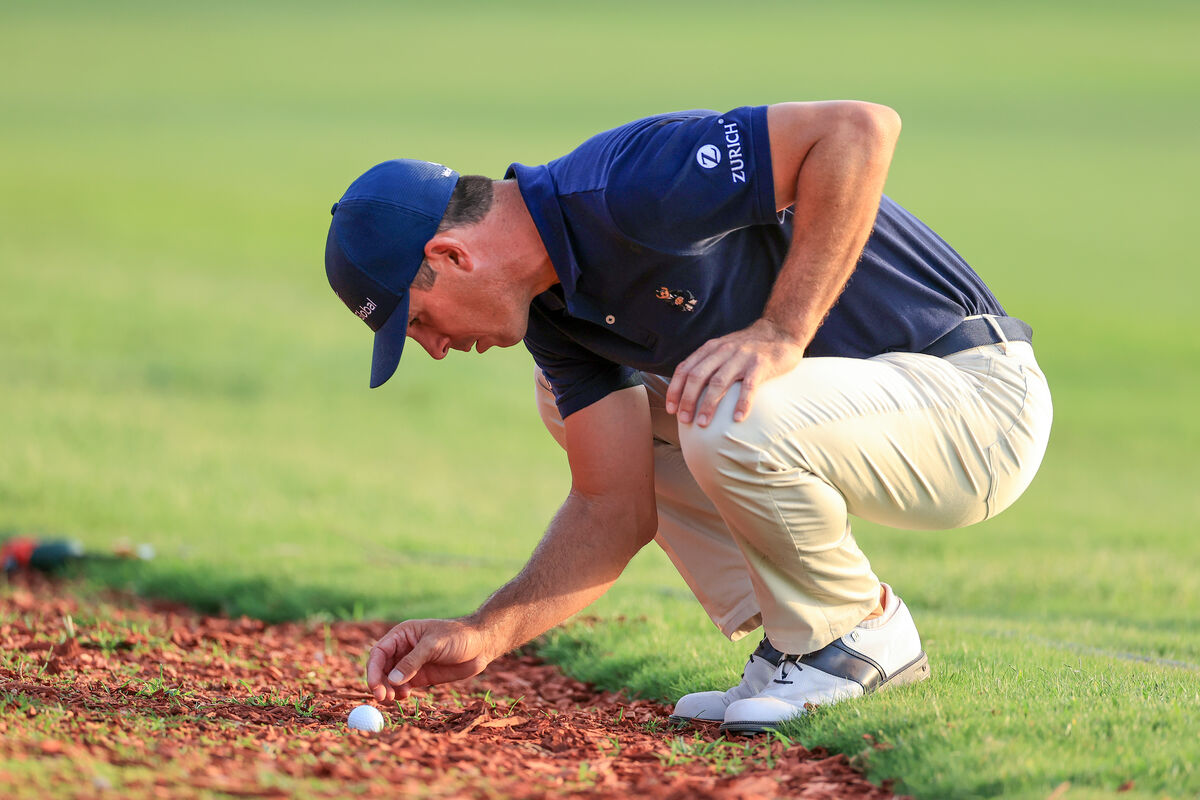Moving Loose Impediments: Official Dos and Don'ts

It seems that recreational golfers are always confused about The USGA Rules on loose impediments. Can you move that twig, or can you not? What happens if your ball moves in the process? In addition to the correct procedure, you must also know the definition of a loose impediment to ensure you apply the rules correctly. Let's clear up the confusion so you can accurately assess your situation within the Rules of Golf.
Relief from Loose Impediments
USGA Rule 15.1 is dedicated to relief from loose impediments. The long and the short of it is, you are allowed to move loose impediments, even in bunkers and penalty areas.
This is great news, but you're not completely out of the woods. If your ball at rest moves while you're moving a loose impediment (except on the putting green or teeing area), you incur a one-stroke penalty, and must replace your ball.
What Is a Loose Impediment?
Now that you know what you can and can not do with loose impediments, you better know what exactly counts as a loose impediment, and what doesn't. A loose impediment is anything natural to the golf course that isn’t fixed, attached, or growing. This includes sticks, leaves, twigs, loose blades of grass, pebbles, and sand.
If any of these impediments are stuck to the golf ball, they are not considered to be loose, and you cannot remove them. That leaf adhered to your ball by the fresh morning dew? Sorry, but it's not loose, and you can't move it.
| Object | Type |
| Leaves | Loose Impediment |
| Grass (detached, not growing) | Loose Impediment |
| Animal Waste | Loose Impediment |
| Aeration Plugs | Loose Impediment |
| Twigs and Sticks | Loose Impediment |
| Snow | Loose Impediment OR Standing Water (your option) |
| Bunker Rake | Movable Obstruction |
Exceptions to the Rule
What fun would a Rule of Golf be without some exceptions? Rule 15.1 comes with a couple fun-filled exceptions of its own.
The first exception is also the one that you're most likely to encounter. It comes into play when you are allowed to lift your ball under the Rules of Golf. Let's say you find a ball nestled against a stick at the top of a steep hill running away from the fairway. You think it's your ball, but need to lift it to truly identify it, which is totally fine according to the Rules. However, this is where the first loose impediment exception comes into play. The exception says that before replacing a ball, you can not remove a loose impediment that would likely cause your ball to move had it been in place when the loose impediment was moved.
In other words, if moving the stick would likely cause your ball to move, you can't move the stick when you lift your ball to identify it. The penalty for violating this exception is one stroke, but you don't have to replace the loose impediment that you moved.
The second exception seems obscure. It states that you cannot move a loose impediment to alter the conditions of a ball in motion. For example, if in fourball, your partner's ball is headed directly for a stick, you must resist the temptation to move the stick (or any other loose impediment) to affect that ball in motion.
Loose Impediments on the Green
Once you're on the green, loose impediments are no longer an issue. You can remove any loose impediment, and if your golf ball moves in the process, you can even place it back in its original position with no penalty.
Of course, you're allowed to mark, lift, and clean your ball on the green as well, so you can legally say goodbye to that leaf that's stuck to your ball.
Conclusion
You're likely to run into loose impediments in any round of golf. In the fall, leaves in particular are everywhere. In the desert you’ll find more rocks and sand. Knowing your rules will help you and your playing partners keep your pace of play moving.